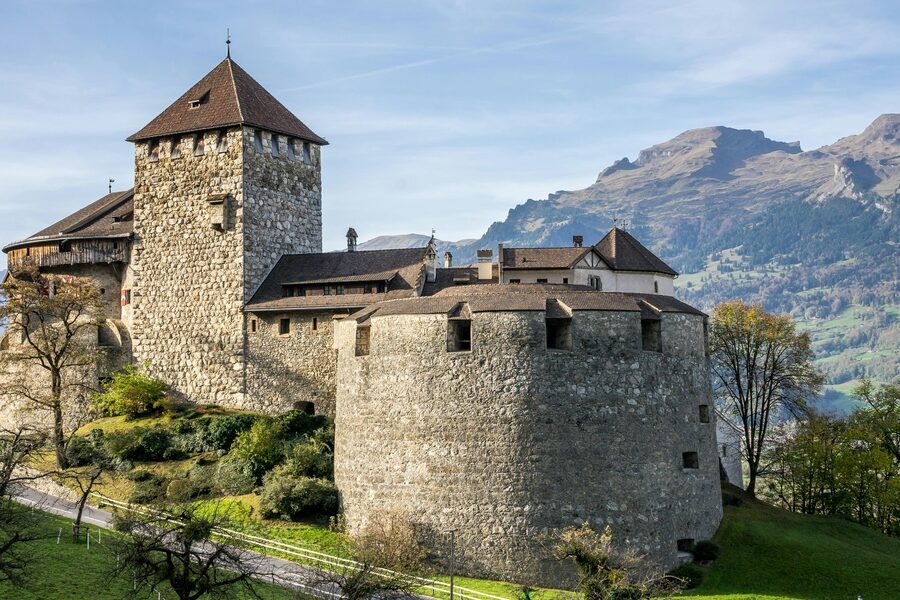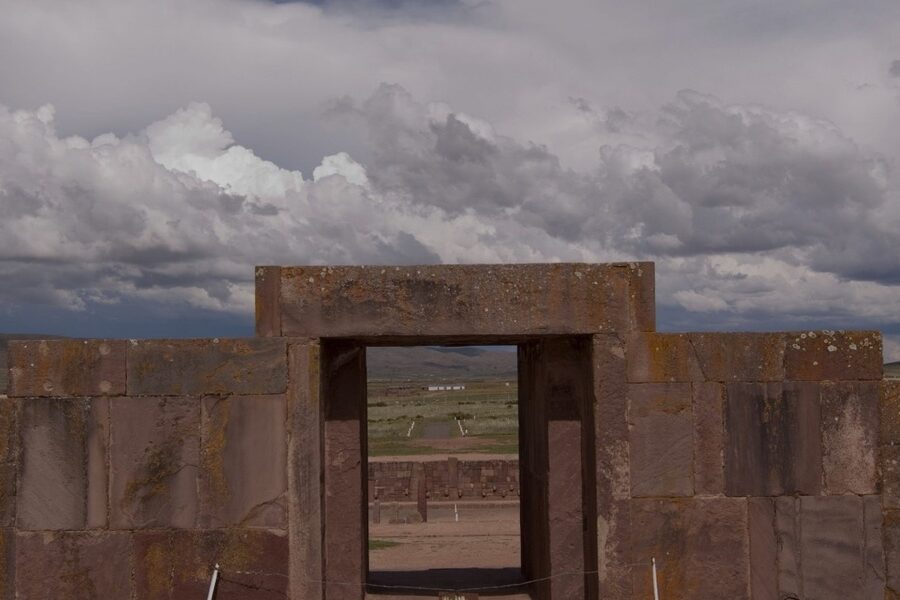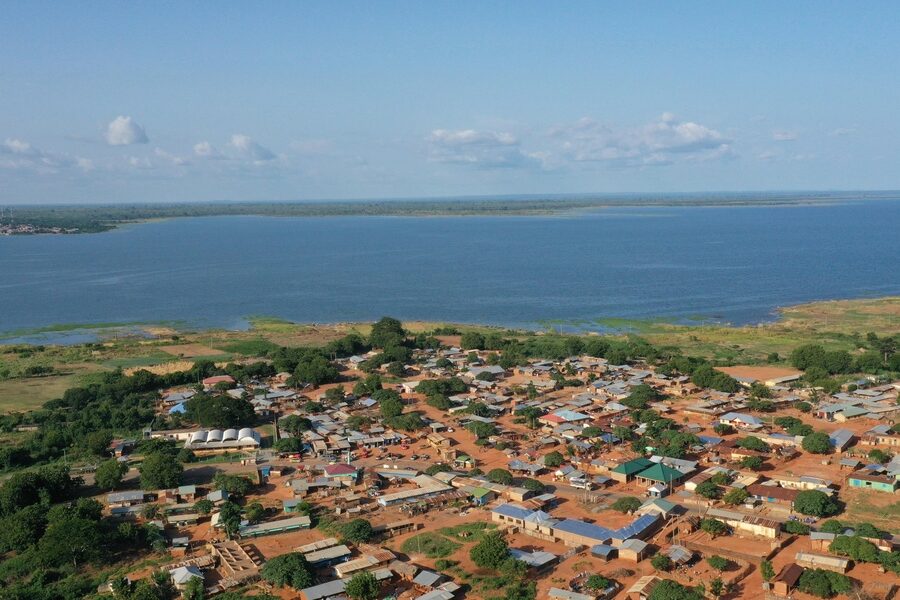Ireland’s landscape is threaded with ruins, castles, cathedrals and standing stones that mark centuries of change. From coastal forts to monastic sites, each place reflects local stories and broader historical shifts worth exploring at a relaxed pace.
There are 50 Historical Places in Ireland, ranging from Armagh Cathedral (St Patrick’s) to Trim Castle. Entries use the columns Location (county / nearest town),Period,Notable (max 15 words) so you can scan at a glance — you’ll find below.
How were the sites chosen for this list?
Sites were selected for clear historical significance, good documentation and geographic spread across counties and periods, aiming to include well-known landmarks and lesser-known but well-preserved sites referenced in reliable sources.
What should I know before visiting these places?
Check opening hours, access rules and weather; many sites are outdoors or on uneven ground, some are on private land or have seasonal closures, and local visitor centres or guides can add important context.
Historical Places in Ireland
| Name | Location (county / nearest town) | Period | Notable (max 15 words) |
|---|---|---|---|
| Newgrange | County Meath / Donore | Neolithic (c.3,200–2,900 BC) | Neolithic passage tomb aligned to winter solstice; UNESCO Brú na Bóinne |
| Knowth | County Meath / Donore | Neolithic (c.3,200–2,900 BC) | Large passage-tomb complex with extensive prehistoric art and archaeology |
| Dowth | County Meath / Donore | Neolithic (c.3,200–2,900 BC) | Passage tomb cluster within Brú na Bóinne; ancient burial site |
| Carrowmore | County Sligo / Sligo | Neolithic (c.4,000–3,000 BC) | One of Ireland’s largest megalithic cemeteries with dolmens and passage tombs |
| Carrowkeel | County Sligo / Castlebaldwin | Neolithic (c.3,500–2,500 BC) | Hilltop passage tombs with panoramic Atlantic views |
| Poulnabrone Dolmen | County Clare / Burren | Neolithic (c.3,800–2,800 BC) | Iconic portal tomb set in the Burren limestone landscape |
| Céide Fields | County Mayo / Belderrig | Neolithic (c.3,500 BC) | Ancient field systems and stone walls, Europe’s oldest known farming landscape |
| Dún Aonghasa | County Galway / Inishmore (Aran Islands) | Iron Age (c.1st millennium BC) | Clifftop prehistoric fort with dramatic Atlantic cliff setting |
| Grianan of Aileach | County Donegal / Burt | Early Medieval (6th–12th c.) | Stone ringfort on a hilltop; reputed royal site of Aileach |
| Skellig Michael | County Kerry / Portmagee (Skellig Islands) | Early Medieval (7th–12th c.) | Monastic island with beehive cells; UNESCO World Heritage Site |
| Glendalough | County Wicklow / Glendalough | Early Medieval (6th–12th c.) | Monastic city founded by St. Kevin; round tower and ruins |
| Rock of Cashel | County Tipperary / Cashel | Medieval (12th c.) | Ecclesiastical complex and royal site with medieval sculptures |
| Hill of Tara | County Meath / Navan | Iron Age / Early Medieval | Ancient ceremonial site, traditional seat of Ireland’s High Kings |
| Navan Fort (Emain Macha) | County Armagh / Armagh | Iron Age / Early Medieval | Prehistoric royal site associated with Ulster kings and legends |
| Kilmainham Gaol | County Dublin / Dublin | 18th–20th c. | Historic prison linked to 1798 and 1916 rebellions |
| Dublin Castle | County Dublin / Dublin | Medieval origin (13th c.) | Administrative centre of English rule with medieval foundations |
| Christ Church Cathedral (Dublin) | County Dublin / Dublin | Medieval (11th–12th c.) | One of Dublin’s oldest cathedrals with Viking-era connections |
| St Patrick’s Cathedral (Dublin) | County Dublin / Dublin | Medieval (12th c.) | Largest cathedral in Ireland; important ecclesiastical history |
| General Post Office (GPO) | County Dublin / Dublin | 20th c. (1916) | Headquarters of the 1916 Rising; symbolic Irish independence site |
| Kilkenny Castle | County Kilkenny / Kilkenny | 12th c. onward | Major Norman stronghold and restored historic castle |
| Trim Castle | County Meath / Trim | 12th c. Norman | Ireland’s largest Norman castle; featured in film and tours |
| Blarney Castle | County Cork / Blarney | 15th c. tower house | Famed for the Blarney Stone and medieval architecture |
| Bunratty Castle | County Clare / Bunratty | 15th c. | Restored medieval fortress with period furnishings and folk park |
| Cahir Castle | County Tipperary / Cahir | 13th c. | Well-preserved Norman castle on the River Suir |
| Ross Castle | County Kerry / Killarney | 15th c. | Lakeside tower house in Killarney National Park |
| Muckross House | County Kerry / Killarney | 19th c. | Victorian mansion set within Killarney National Park |
| Carrickfergus Castle | County Antrim / Carrickfergus | 12th c. Norman | One of Northern Ireland’s best-preserved medieval castles |
| Dunluce Castle | County Antrim / Portrush | 13th–17th c. | Dramatic cliff-edge ruins with medieval and later history |
| Giant’s Causeway | County Antrim / Bushmills | Palaeogene (c.60,000,000 years) | UNESCO basalt columns; iconic natural landmark with folklore ties |
| Battle of the Boyne Site (Oldbridge) | County Meath / Oldbridge | 17th c. (1690) | Key battlefield marking Williamite-Jacobite conflict and political change |
| Monasterboice | County Louth / Drogheda | Early Medieval (5th–12th c.) | High crosses and round tower at an important monastic site |
| Mellifont Abbey | County Louth / Drogheda | 12th c. | Ireland’s first Cistercian abbey; medieval monastic ruins |
| Jerpoint Abbey | County Kilkenny / Thomastown | 12th–16th c. | Well-preserved Cistercian abbey with carved tombs |
| Hook Head Lighthouse | County Wexford / Hook | Medieval origin (13th c.) | One of the world’s oldest lighthouses, still accessible to visitors |
| Spike Island | County Cork / Cobh | Medieval–20th c. | Island fortress, monastic site, and former prison with layered history |
| Charles Fort | County Cork / Kinsale | 17th–18th c. | Star-shaped 17th-c. coastal fortress, key maritime defense site |
| Lough Gur | County Limerick / Bruff | Neolithic–Bronze Age | Archaeological landscape with dwellings, tombs, and lake views |
| Drombeg Stone Circle | County Cork / Glandore | Bronze Age (c.1,000 BC) | Small axial stone circle with sacrificial pit and orientation features |
| Rock of Dunamase | County Laois / Portlaoise | Medieval (10th–12th c.) | Limestone outcrop with Norman and earlier fort remains |
| Dún Ailinne | County Kildare / Allen | Iron Age / Early Medieval | Royal ceremonial hill with prehistoric earthworks |
| Hill of Uisneach | County Westmeath / Moylough | Bronze Age–Early Medieval | Ancient ceremonial centre, considered the island’s mythic centre |
| Derry City Walls | County Londonderry / Derry | 17th c. | Exceptionally intact early modern walled city fortifications |
| Glenveagh Castle | County Donegal / Letterkenny | 19th c. | Victorian castellated mansion in Glenveagh National Park |
| Donegal Castle | County Donegal / Donegal Town | 15th c. | Stone stronghold of the O’Donnell clan, restored interiors |
| Gallarus Oratory | County Kerry / Dingle | Early Medieval (c.7th–9th c.) | Dry-stone beehive church demonstrating early Christian architecture |
| King John’s Castle (Limerick) | County Limerick / Limerick | 13th c. Norman | Riverside fortress with interpretive exhibitions and city views |
| Ross Errilly Friary | County Galway / Headford | 14th–16th c. | Well-preserved Franciscan friary with cloisters and church ruins |
| Croagh Patrick | County Mayo / Murrisk | Early Medieval and earlier | Pilgrimage mountain associated with St. Patrick; annual pilgrim tradition |
| Ballintoy Harbour and ruins | County Antrim / Ballintoy | Medieval–Early Modern | Historic harbour with nearby ruined structures and sea-links |
| Armagh Cathedral (St Patrick’s) | County Armagh / Armagh | Medieval origin (5th–13th c.) | Ecclesiastical centre for both Catholic and Anglican traditions |
Images and Descriptions

Newgrange
Newgrange in County Meath is a 5,200-year-old Neolithic passage tomb. It dates to about 3200 BC and predates the pyramids. It is famous for its winter solstice sunlight alignment and ornate stone carvings. It holds UNESCO World Heritage status and draws visitors for its age and design.

Knowth
Knowth in County Meath is a large Neolithic passage tomb complex. It dates to the same era as Newgrange and contains many burial mounds and carved stones. It is notable for its extensive megalithic art and long passages. It forms part of the Brú na Bóinne World Heritage Site.

Dowth
Dowth in County Meath is a Neolithic passage tomb site near the River Boyne. It holds large cairns and carved stones from around 3200 BC. It is less visited than Newgrange but important for its archaeology and ancient chambered tombs.

Carrowmore
Carrowmore in County Sligo is one of Ireland’s largest megalithic cemeteries. It dates to the Late Neolithic and early Bronze Age. It features stone circles, dolmens, and burial cairns spread across a wide plain. It shows early ritual landscapes and long-term ritual use.

Carrowkeel
Carrowkeel in County Sligo is a mountain group of Neolithic passage tombs. It dates to around 3000 BC and sits on limestone ridges. It includes acutely built cairns and scenic views. It helps explain burial practices and ritual sites in northern Connacht.

Poulnabrone Dolmen
Poulnabrone Dolmen in County Clare is a striking portal tomb from the Neolithic era. It dates to around 3000–2500 BC and stands on the Burren limestone plateau. It is notable for its simple, dramatic silhouette and archaeological finds of human remains and artifacts.

Céide Fields
Céide Fields in County Mayo is an ancient Neolithic field system. It dates to about 5,000 years ago and shows stone walls that mark early farming plots. It includes a visitor centre and displays early land use and settlement on bogland. It reveals prehistoric farming life.

Dún Aonghasa
Dún Aonghasa on Inishmore, County Galway is an Iron Age cliff fort. It sits on dramatic sea cliffs and dates from about 1100–500 BC. It includes concentric stone walls and large defensive earthworks. It offers strong coastal views and tangible Iron Age fortification.

Grianan of Aileach
Grianan of Aileach in County Donegal is a stone ringfort on a hilltop. It dates to the early medieval period and likely served as a royal stronghold. It features a restored circular stone fort with wide views over the Inishowen peninsula. It marks early Gaelic power sites.

Skellig Michael
Skellig Michael off County Kerry is an early medieval monastic island. It dates from the 6th–12th centuries and features beehive cells and stone churches. It is a UNESCO World Heritage Site and sits on steep cliffs above the Atlantic. It shows remote monastic life and strict island access.

Glendalough
Glendalough in County Wicklow is an early medieval monastic settlement. It dates from the 6th century and centers around two lakes. It contains round towers, churches, and high crosses. It sits in a glacial valley and remains a major pilgrimage and hiking site.

Rock of Cashel
The Rock of Cashel in County Tipperary is a medieval fortress and church complex. It dates mainly to the 12th–13th centuries. It includes a round tower, cathedral, and high cross. It served as a historic seat of Munster kings and later as an important ecclesiastical site.

Hill of Tara
The Hill of Tara in County Meath is an ancient ceremonial and royal complex. It dates from the Bronze Age through early medieval times. It contains mounds, raths, and mythic sites tied to High Kings of Ireland. It remains central to Irish legend and archaeology.

Navan Fort (Emain Macha)
Navan Fort near Armagh is an Iron Age ceremonial site historically called Emain Macha. It dates to the 1st millennium BC and features a large circular enclosure and mound. It serves as a legendary Ulster royal site and shows early ritual and political activity.

Kilmainham Gaol
Kilmainham Gaol in Dublin is a 19th-century former prison. It dates from 1796 and housed many Irish political prisoners. It is notable for its role in modern Irish history and the independence movement. It operates as a museum with guided tours.

Dublin Castle
Dublin Castle in Dublin is a medieval castle complex and government site. It dates to the early 13th century and later served as British administration headquarters. It includes state apartments, a medieval undercroft and defensive walls. It remains central to Irish civic life and history.

Christ Church Cathedral (Dublin)
Christ Church Cathedral in Dublin is a medieval cathedral with Norman roots. It dates from the 11th–12th centuries and stands on an early Christian site. It includes a crypt, medieval architecture, and mixed restorations. It serves as a major religious and tourist site.

St Patrick’s Cathedral (Dublin)
St Patrick’s Cathedral in Dublin is a Gothic cathedral dating from the 12th century. It is the national cathedral of the Church of Ireland. It features historic memorials, stained glass, and links to St Patrick traditions. It holds strong civic and cultural roles in Dublin.

General Post Office (GPO)
The General Post Office on O’Connell Street in Dublin is a 19th-century public building. It served as the rebel headquarters during the 1916 Easter Rising. It remains a symbol of Irish independence and includes a museum exhibition on the Rising.

Kilkenny Castle
Kilkenny Castle in County Kilkenny is a 12th-century Norman castle with later restorations. It sits on the River Nore and dominates the town. It includes restored rooms, formal gardens, and parkland. It shows medieval power and later aristocratic life.

Trim Castle
Trim Castle in County Meath is Ireland’s largest Anglo-Norman castle. It dates to the late 12th and 13th centuries. It features massive curtain walls and a large keep. It offers tours and provides insight into Norman military architecture.

Blarney Castle
Blarney Castle in County Cork is a medieval fortress famous for the Blarney Stone. It dates to the 15th century and sits in extensive gardens. Kissing the stone is linked to the gift of eloquence. It remains a major tourist attraction with accessible grounds.

Bunratty Castle
Bunratty Castle in County Clare is a 15th-century tower house restored as a historic site. It sits beside Bunratty Folk Park with recreated 19th-century buildings. It hosts medieval banquets and exhibits that show everyday life in past centuries.

Cahir Castle
Cahir Castle in County Tipperary is a well-preserved medieval castle on an island in the River Suir. It dates from the 13th century and features strong curtain walls and towers. It includes guided tours and shows military and residential castle life.

Ross Castle
Ross Castle in County Kerry is a 15th-century tower house on Lough Leane. It belonged to the O’Donoghue family and later saw conflicts in the 17th century. It offers boat access to nearby islands and remains a scenic lakefront fortress.

Muckross House
Muckross House in County Kerry is a Victorian mansion within Killarney National Park. It dates to the 19th century and showcases period rooms, farmhouses, and gardens. It gives insight into landed gentry life and national park conservation.

Carrickfergus Castle
Carrickfergus Castle in County Antrim is a Norman fortress on Belfast Lough. It dates from the late 12th century and served as a strategic garrison. It retains towers, curtain walls, and a strong maritime setting. It remains a well-preserved medieval site.

Dunluce Castle
Dunluce Castle in County Antrim is a dramatic medieval castle built on sea cliffs. It dates to the 15th century and features ruined walls and chambers. It links to Gaelic and later settler histories and offers coastal views over the North Atlantic.

Giant’s Causeway
The Giant’s Causeway in County Antrim is a natural UNESCO World Heritage Site of basalt columns. It formed by volcanic activity about 60 million years ago. It features hexagonal stone pillars and coastal scenery. It holds strong geological and mythic interest.

Battle of the Boyne Site (Oldbridge)
The Oldbridge site near Drogheda, County Meath marks the 1690 Battle of the Boyne. It includes monuments and a visitor center that explain the Williamite-Jacobite conflict. The site shows military history and the battle’s long political legacy.

Monasterboice
Monasterboice in County Louth is an early medieval monastic site. It dates from the 5th–12th centuries and contains high crosses and round towers. The famed Muiredach’s High Cross stands here. It shows early Christian art and monastic burial traditions.

Mellifont Abbey
Mellifont Abbey in County Louth is Ireland’s first Cistercian abbey, founded in 1142. It includes ruined cloisters, chapter house, and church remains. It played a key role in medieval ecclesiastical life. It remains important for monastic archaeology and medieval history.

Jerpoint Abbey
Jerpoint Abbey in County Kilkenny is a 12th-century Cistercian abbey in ruins. It features carved capitals, tombs, and a cloister. It played a central role in medieval religious life in south Leinster. It offers architectural detail and local burial history.

Hook Head Lighthouse
Hook Head Lighthouse in County Wexford is one of the world’s oldest operational lighthouses. It dates to the 12th century with later rebuilding. It sits on a rugged headland and includes guided tower tours. It demonstrates maritime history and coastal navigation.

Spike Island
Spike Island in County Cork is a multi-period site with a monastic past and later fortress and prison uses. It served as a defensive fort and a 19th- to 20th-century prison. It provides guided tours that explain its layered military and social history.

Charles Fort
Charles Fort near Kinsale, County Cork is a star-shaped 17th-century military fort. It dates from the late 1600s and exemplifies European bastion fort design. It overlooks Kinsale harbour and includes well-preserved ramparts and defensive bastions.

Lough Gur
Lough Gur in County Limerick is a rich archaeological landscape with megalithic monuments. It holds Neolithic, Bronze Age, and medieval remains around a lake. It displays ringforts, megaliths, and folklore sites. It provides insight into long-term settlement patterns.

Drombeg Stone Circle
Drombeg Stone Circle in County Cork is a Bronze Age axial stone circle. It dates to around 1100–800 BC and sits on a coastal plateau. It includes five burial cists nearby and seasonal solar alignments. It is a compact example of Bronze Age ritual sites.

Rock of Dunamase
The Rock of Dunamase in County Laois is a medieval motte and castle ruin on a limestone outcrop. It dates from Norman times and offers long views across the plain. It shows strategic positioning and the rise of Norman power inland.

Dún Ailinne
Dún Ailinne in County Kildare is an ancient ceremonial hill associated with royal inauguration. It dates from the Iron Age and includes circular earthworks and mounds. It appears in early Irish texts and reflects ancient ritual landscapes and kingship.

Hill of Uisneach
The Hill of Uisneach in County Westmeath is a prehistoric ritual and ceremonial site. It holds Bronze Age and later features, including ritual mounds and sacred stones. It is linked to Irish myth as a symbolic centre of the island and seasonal festivals.

Derry City Walls
Derry City Walls in County Londonderry are early modern defensive walls built in the 17th century. They remain complete and encircle the old city. They served in sieges and later civic life. They provide a walking route with historic bastions and gates.

Glenveagh Castle
Glenveagh Castle in County Donegal is a 19th-century castellated mansion in a national park. It sits beside Glenveagh Lake and gardened grounds. It illustrates Victorian estate life and conservation in a wild landscape. It includes guided house tours and garden paths.

Donegal Castle
Donegal Castle in County Donegal is a 15th-century stronghold of the O’Donnell clan. It combines a tower house with a later fortified residence. It sits on the River Eske and shows Gaelic clan power and later restoration efforts.

Gallarus Oratory
Gallarus Oratory in County Kerry is an early Christian stone chapel built using dry masonry. It likely dates between the 6th and 9th centuries. Its boat-shaped construction remains remarkably intact. It demonstrates early Christian worship architecture on the Dingle Peninsula.

King John’s Castle (Limerick)
King John’s Castle in Limerick city is a late 12th-century Norman fortress on the River Shannon. It includes restored towers, curtain walls, and exhibits on medieval Limerick. It offers hands-on displays and river views tied to urban medieval life.

Ross Errilly Friary
Ross Errilly Friary in County Galway is a well-preserved medieval Franciscan friary. It dates to the 14th–15th centuries and contains cloisters, church ruins, and burial sites. It shows monastic life and later Reformation impacts in the west of Ireland.

Croagh Patrick
Croagh Patrick in County Mayo is a mountain and pilgrimage site tied to Saint Patrick. Pilgrimage use dates back many centuries and peaks during the Reek Sunday pilgrimage. It commands wide views and combines religious meaning with challenging hill walking.

Ballintoy Harbour and ruins
Ballintoy Harbour in County Antrim pairs a historic fishing harbour with nearby ruins and coastal scenery. It includes old quay structures and nearby church ruins perched by the sea. It reflects maritime and rural coastal life and offers photogenic coastal access.

Armagh Cathedral (St Patrick’s)
Armagh Cathedral in County Armagh refers to St Patrick’s cathedrals in the ecclesiastical capital. The site traces to early Christian foundations and later medieval and modern churches. It holds strong links to Saint Patrick and to Armagh’s role as an Irish religious center.






